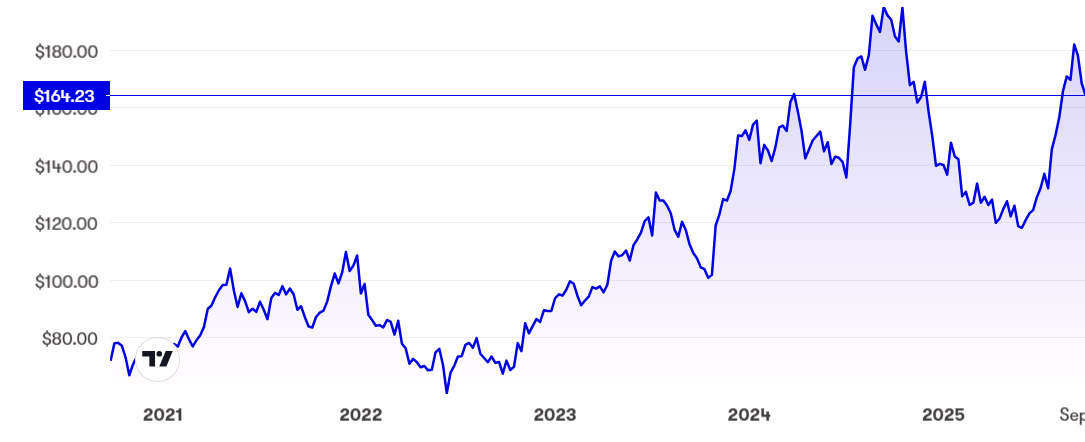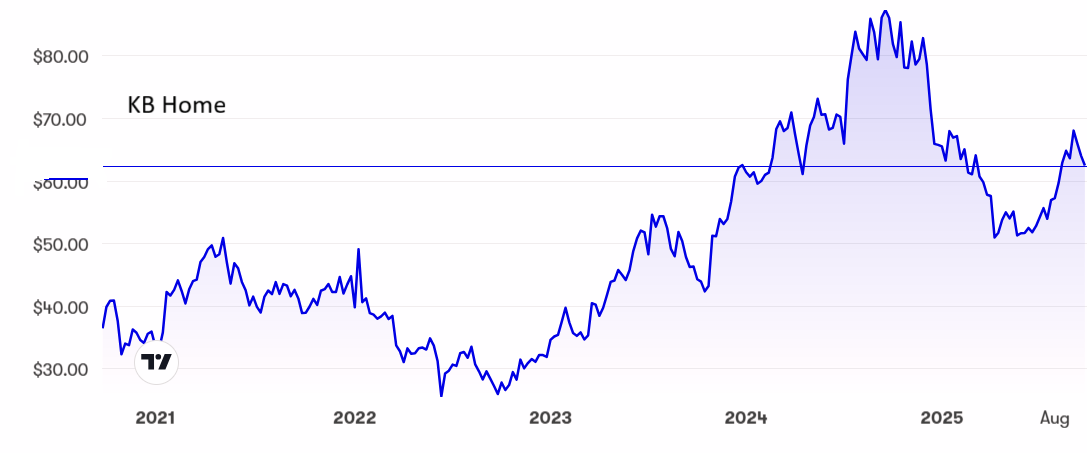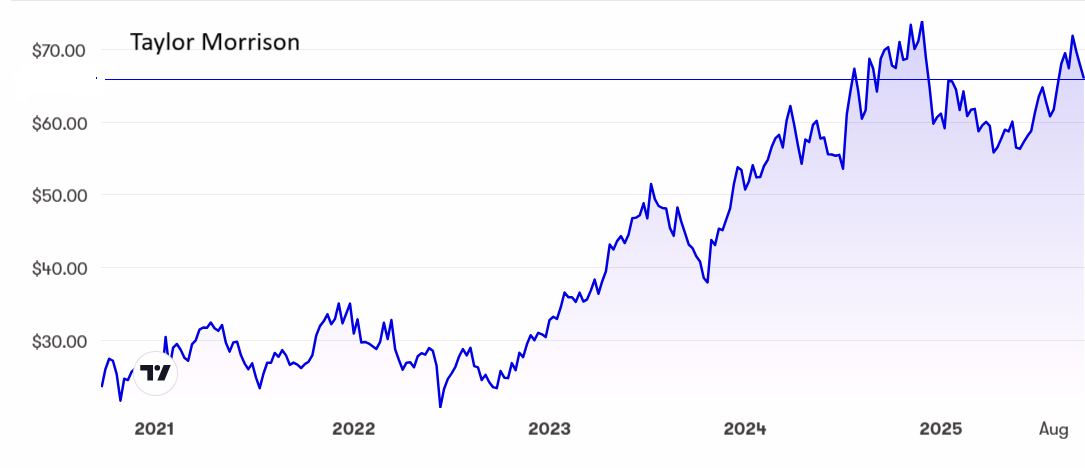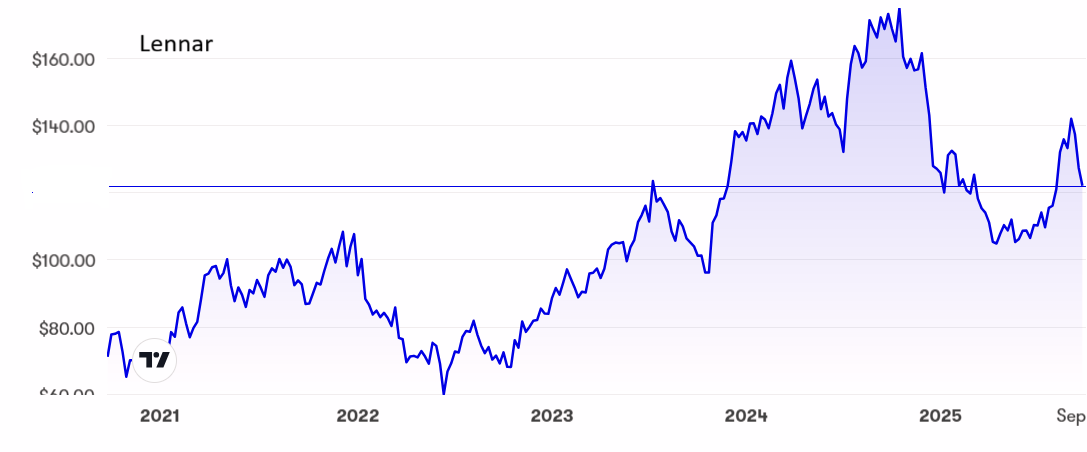Four stocks for active traders
Each of these stocks has eased in recent sessions, but analyst Rodney Hobson believes the next swing will likely be upward. Here’s why.
24th September 2025 10:25
by Rodney Hobson from interactive investor

It has been a bumpy ride over the past two years or so for American housebuilders and they have been overshadowed by tech stocks so far this year. Yet the American economy is still holding up remarkably well in the turmoil and that must be good for housebuilders.
- Invest with ii: Buy US Stocks from UK | Most-traded US Stocks | Cashback Offers
The decision by the Federal Reserve to reduce interest rates was obviously welcome news for the sector as it reduces borrowing costs for homebuyers and stimulates the economy. Even better, the US central bank indicated that two more cuts are likely before year end. The dollar took the news well, quickly rebounding after an initial slide, as finance markets decided that cutting interest rates was a sign of strength rather than a caving into President Donald Trump’s demands.
The Fed’s decision followed news that US wholesale prices fell unexpectedly in August, by only 0.1% but against expectations of a 0.3% rise. Underlying price pressures are clearly easing and will feed through into consumer prices in the months ahead.
D.R. Horton Inc (NYSE:DHI) is the leading homebuyer in the US with sites in 36 states. While it concentrates overwhelmingly on detached homes, it does have a wide range of homes to offer plus a one-stop shop including conveyancing and mortgages.
- Is Wall Street heading for third boom year in a row?
- Watch our video: why we’re upping exposure to US shares
Its shares have been well below $80 twice over the past five years but they are now double that level, having peaked at $195 just over a year ago. Even so, they dipped below $120 early this summer. At current levels at $165 the price/earnings (PE) ratio is only 13.2, which suggests the shares are on the cheap side, but the yield is disappointing for income seekers as it is stuck below 1%.

Source: interactive investor. Past performance is not a guide to future performance.
KB Home (NYSE:KBH) operates mainly on the West Coast, but it also builds on sites across the southern states. It too provides finance for buyers through a joint venture. Its shares follow a similar pattern to Horton’s, with a five-year low below $30 and a peak near to $90. There was a serious dip around April to June, but the current level is a little over $60, where the statistics are more attractive, with a PE a very lowly 8.3 and the yield still not great at 1.6%.

Source: interactive investor. Past performance is not a guide to future performance.
Taylor Morrison Home Corp (NYSE:TMHC) has made a virtue of seeking out high-growth areas, mainly towards the west of the US, but with a wide geographic spread, and with a greater emphasis on first-time buyers without forgetting customers who can afford holiday homes.
The shares have moved less erratically than others in the sector but even so the past five years have seen lows near to $20 and highs above $80. At around $66 the stock has an even more tempting PE at 7.6 but there is no dividend.

Source: interactive investor. Past performance is not a guide to future performance.
Lennar Corp Class A (NYSE:LEN) has perhaps the widest range of products among the American housebuilders, targeting all markets from first-time buyers to luxury seekers and including homes for rent. Its financial services arm is more comprehensive and the group has also invested in housing-related technology start-ups.
The shares raced up from $60 to $175 but have fallen further from the peak than the others have. At just over £120, the PE is 12 and the yield is the best of the larger companies in the sector at just over 1.6%.

Source: interactive investor. Past performance is not a guide to future performance.
Hobson’s choice: all four shares are a buy at current levels but only for active traders. The yields for long-term investors are just not good enough. The next swing is likely to be upward but consider bailing out if any stock in the sector gets near to its previous peak.
For anyone who insists on buying and holding, Lennar looks the best of the bunch.
Rodney Hobson is a freelance contributor and not a direct employee of interactive investor.
These articles are provided for information purposes only. Occasionally, an opinion about whether to buy or sell a specific investment may be provided by third parties. The content is not intended to be a personal recommendation to buy or sell any financial instrument or product, or to adopt any investment strategy as it is not provided based on an assessment of your investing knowledge and experience, your financial situation or your investment objectives. The value of your investments, and the income derived from them, may go down as well as up. You may not get back all the money that you invest. The investments referred to in this article may not be suitable for all investors, and if in doubt, an investor should seek advice from a qualified investment adviser.
Full performance can be found on the company or index summary page on the interactive investor website. Simply click on the company's or index name highlighted in the article.
Disclosure
We use a combination of fundamental and technical analysis in forming our view as to the valuation and prospects of an investment. Where relevant we have set out those particular matters we think are important in the above article, but further detail can be found here.
Please note that our article on this investment should not be considered to be a regular publication.
Details of all recommendations issued by ii during the previous 12-month period can be found here.
ii adheres to a strict code of conduct. Contributors may hold shares or have other interests in companies included in these portfolios, which could create a conflict of interests. Contributors intending to write about any financial instruments in which they have an interest are required to disclose such interest to ii and in the article itself. ii will at all times consider whether such interest impairs the objectivity of the recommendation.
In addition, individuals involved in the production of investment articles are subject to a personal account dealing restriction, which prevents them from placing a transaction in the specified instrument(s) for a period before and for five working days after such publication. This is to avoid personal interests conflicting with the interests of the recipients of those investment articles.